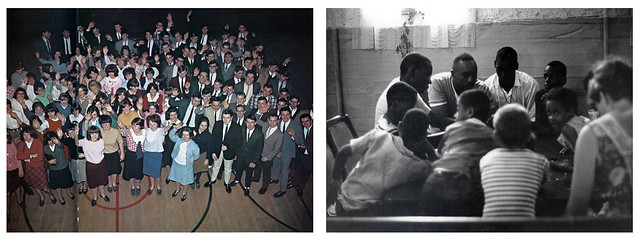Back to Square One: Racial Imbalance in the Boston Public Schools
racial: ra·cial│\ˈrā-shəl\ │adj. (1862) 1: of, relating to, or based on a race 2: existing or occurring between races
imbalance: im·bal·ance │\(ˌ)im-ˈba-lən(t)s\│n. (ca. 1890) lack of balance: the state of being out of equilibrium or out of proportion*
Alone, these two words invoke feelings of mixed emotions and differing opinions. When combined, however, they create a phrase powerful enough to alter the history and reputation of a city and its residents. Up until the 1960s, the de facto segregation of the Boston neighborhoods and the resulting segregation within the schools occurred without widespread attention. This all changed with the construction of the phrase, "racial imbalance." Through photographs, primary documents, and the text, this exhibit focuses on exploring the initial attempt to desegregate the Boston Public Schools in the 1960s, before Judge Garrity's forced busing order.
Before exploring this exhibit, what do you think "racial imbalance" means in regards to a school? Now, imagine that someone asked you to draw up a plan to resolve a problem stemming from racial imbalance in a school. How would you approach it? Before you answer, try to keep in mind a few things. Who is in charge of the school committee? What is the majority public opinion of the city's residents? What are your own viewpoints? Will your plan affect your life or only the lives of others? These are all questions that need addressing in this situation. Oh, and one last thing: you live in the “Cradle of Liberty”, the reputation of your city is at stake, and the whole world is watching, waiting, and judging.
With this in mind, explore these next few pages to discover the roots of the chaos and controversy surrounding the desegregation of the Boston Public Schools.
*Merriam Webster’s Collegiate Dictionary 10th edition
Photo sources: Boston City Archives (left), Northeastern University Archives and Special Collections (right)
Credits
Content for this exhibit was written by Connor Anderson, a graduate student in the Archives Program (History MA) at UMass Boston. Exhibited items appear courtesy of the Boston City Archives and the Northeastern University Archives & Special Collections


